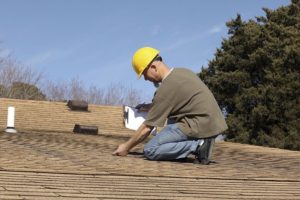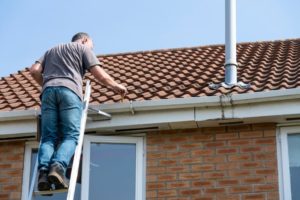The need for attic ventilation to your roof cannot be underestimated. Not only does it help you save some energy bills, but it also promotes and improves the longevity of your roof. Aside from the fact that heat in your attic can be very disastrous to your roof, it also shortens the shelf life.
Essentially, attic ventilation simply deals with the ventilation of the house. It defines the breathing space and breathing condition of your home. Not having proper ventilation can make you feel like you bought a sauna. However, properly venting your attic might help you let go of the heat in your home.
How Much Ventilation Does Your Attic Need?
Attic ventilation can be good but do you know excess ventilation can just be as bad as insufficient ventilation? And now, the problem comes in. How can one know the exact ventilation needed?
Well, ideal or perfect ventilation in an attic has the same level of air entering with the level of air going out. It is however recommended by authorities that one square foot of attic ventilation should be used per a hundred and fifty (150) square feet.
To know if you are within this range, all you simply need is to add up all the NFAs of your vent. That is the Net Free Vent area of your vent. The NFAs of each of the installed vents should be marked on it.
After adding it up, divide the sum by the area of the attic. That helps you determine if you are still within the ideal range recommended by experts I.e. one square foot of attic ventilation to a hundred and fifty square feet.
Also, a square foot of attic ventilation could be used per 300 Square feet of enclosed attic space for minimum residential attic ventilation.
How To Determine If Your Attic Has Enough Ventilation
As earlier stated, if the level of air coming in is the same as the level of air going out, then the ventilation is just perfect. However, here are five ways to know if your attic is properly ventilated.
- Study your roofing: Leaking roofs can be a sign of improper ventilation. When moisture gets locked up in your attic, it can cause a lot of damage to your roof and reduce its shelf life. Proper ventilation should be able to allow moisture to flow out with all conveniences.
- Scrutinize your utilities: This is another sign that you have improper ventilation. If you have gotten your utility bill earlier than normal, then your HVAC is overworking. Perfect attic ventilation will promote the circulation of heated air out of your home and provide a proper cooling system.
- Pests Around Your House And Roofs: An improper ventilation means too much moisture in your roof and this moisture attracts pests and rodents to your roof and home. If rodents and pests are at your house and roof, then you might need to check your ventilation to be sure that they have not done excreta or urine around the house.
- Varying Temperature In Your Home: Have you noticed a rise or fall in the home’s temperature? Then this can be a sign of improper ventilation. Improper ventilation makes your home hot or cold at different places.
- Ice Dams In Your Roof: Large ice dams on your roof could mean the ventilation of your home is poor. When the roof heats up, the snow melts, and then the running water freezes when it gets to the edge of the roof. Overheating of your roof simply means one thing: improper ventilation.
Why Attic Ventilation Is Critical?
Attic ventilation is very important because it helps to increase the longevity of your roof. Here are also some benefits of attic ventilation. They are:
- It helps to make your home a comfortable palace: Improper ventilation can bring discomfort to your home. Moths, molds as well as mildew are not comfortable things to have around. However, proper ventilation helps to make all these go away conveniently.
- Lengthen your roof’s shelf life: Proper ventilation helps to improve the shelf life of the roof by preventing trapped moisture from accumulating in your roof as well as preventing roof overheating.
- Saves energy cost: Your energy cost can be cut down a little because improper ventilation can lead to increased electricity bills as inconsistent heating and cooling down increases your HVAC units.
How To Improve Ventilation In Your Attic
There are a few steps as well as actions to take when considering improving your ventilation. They are:
- Identify Your Needs
That is the first thing you need to know. You need to know your needs. What does your attic need? What are your specifications? First of all, you need to know if you need to minimize or maximize your ventilation. There are two ways:
- Winter: Ice build-up during winter can mean you have improper ventilation. Warm air from within could form the formation of ice which could be stuck in the attic.
- Summer: When your ceiling feels warm during summer, then your attic is not well ventilated
2. Improve Air Flows With Fans
Fans powered by a solar panel or electric connection can help in trapping air out of the attic. When the attic gets too warm, the fan can be switched in manually or can be switched on by a thermostat which automatically determines when there is overheating.
3. Insert Roof Vents
Adding roof vents into your home can help in preventing heat buildup in your attic. Warm and moist air can be prevented by inserting roof vents.
Conclusion
Attic Ventilation helps to improve your home. It helps to prevent buildup and keep pests at bay. Your attic can be over ventilated and It can also be under-ventilated. But either way, they need to be corrected so as to prevent you from mistaking your home for a sauna or a breeding place for pests, moths amongst other things. Proper ventilation gives your attic a fascinating experience. Need help? You can get in touch with a Pro at Roof Royale to determine if your attic is probably ventilated.






